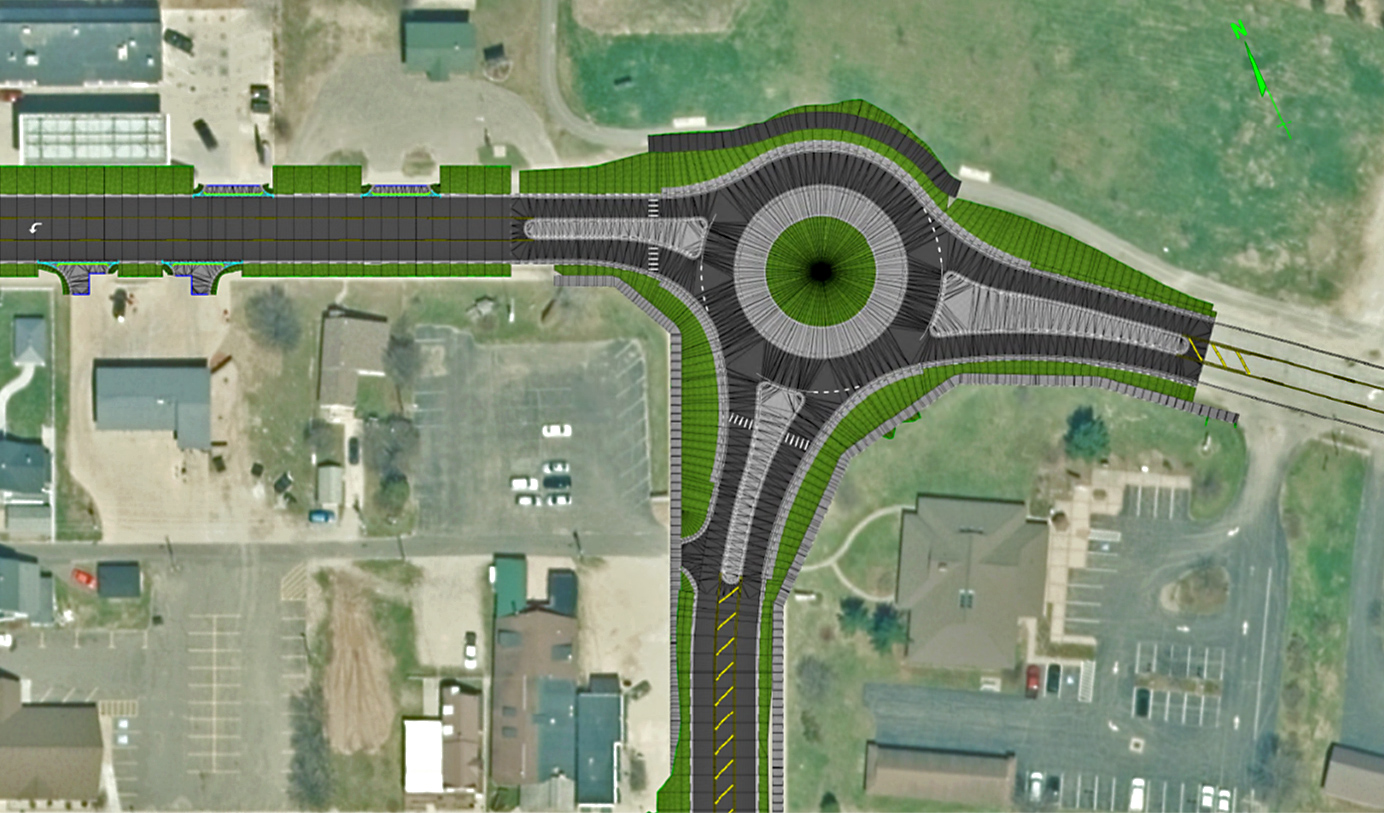The Michigan Department of Transportation (MDOT) is tapping the power of virtual public involvement to capture public input, including feedback on a study to improve traffic operations on Interstate 94 and a project to reconstruct a highway through a busy tourist town.
As part of the process, MDOT is using State Transportation Innovation Council Incentive Program funds to document best practices from these and other projects and create a virtual public involvement guide for State and local agency staff.
Since being built in the 1950s, a segment of I-94 in Ann Arbor, MI, has seen significant land use changes and traffic growth, but no substantial roadway improvements. Now one of the State’s busiest segments of four-lane freeway, the increased traffic and existing substandard design elements have created operational and safety challenges. MDOT’s recent I-94 Operations Study looked at operational improvements to increase safety and vetted the concepts through public engagement.
MDOT conducted the first public meeting for the study in November 2019 and drew only a small number of community residents. An additional challenge MDOT faced was the need to better engage the commuters and long-haul commercial vehicles who also use this important international trade corridor between the United States and Canada.
To increase public engagement, MDOT conducted a survey using an all-in-one tool—a software platform that combines crowdsourcing features, mapping, visualization, file sharing, and survey instruments. MDOT publicized the survey by using its social media platforms to get the word out to corridor commuters and target industry stakeholder groups. Over a 1-month period between November and December 2019, the agency received 1,500 survey responses and 421 written comments through the survey site.
Kari Martin, MDOT’s University Region Planner, said the all-in-one tool was a valuable resource for capturing a significant amount of feedback from a variety of stakeholders.
“During this unprecedented pandemic, and after the minimal in-person attendance at the first public meeting, MDOT did not need to delay the study,” she said. “We were also able to relay the survey results by employing additional virtual public involvement techniques.”
 A rendering of the roundabout concept used by MDOT during its VPI presentations for the M-28 project in Munising. (Credit: Michigan Department of Transportation)
A rendering of the roundabout concept used by MDOT during its VPI presentations for the M-28 project in Munising. (Credit: Michigan Department of Transportation)MDOT is in the midst of a 2-year, $15 million project to reconstruct M-28 through the small but busy tourist town of Munising. Work includes a shared-use pathway and a roundabout at a major intersection as well as city utility work and streetscape improvements.
As part of a virtual public involvement pilot, MDOT deployed an online survey to get feedback from stakeholders on aesthetic choices and placement options for the project’s streetscaping elements. The survey also gauged community interest in volunteering for future landscape maintenance efforts at the roundabout. MDOT incorporated the feedback into the design, which the agency hopes will lead to greater public engagement and sense of ownership.
“The use of the survey turned out to be a positive tool for us during the final design phases of all facets of our project,” Munising City Manager Devin Olson said. “We have incorporated the majority of the survey’s results into our plans. We were able to do this because the outreach occurred at a phase of the project in which we had the majority of the foundation of the plans done. The survey questions mostly dealt with details that, although minor in scope, will be some of the most visible attributes.”
In addition to promoting the survey through MDOT and city of Munising social media accounts, MDOT crowdsourced publicity for the survey. The agency did this by encouraging the attendees of a public meeting that took place in July 2019, about a year out from the start of construction, to post the survey link on their social media accounts.
About 80 people attended the July meeting, along with three media outlets. MDOT streamed the meeting from a mobile device. As an alternative to the livestream for those unable to connect, MDOT posted a brief slideshow of the presentation on its Twitter feed and asked stakeholders to link to it. The slideshow logged more than 1,000 views.
In conjunction with social media posts, MDOT used traditional news releases, an email list, and links shared by stakeholder organizations to drive people to the survey. The survey attracted 90 respondents, 10 of whom indicated a willingness to perform annual landscaping duties.
—MORE INFORMATION
Contact Kari Martin or Dan Weingarten of MDOT for information on the agency’s use of virtual public involvement on the I-94 operations study and M-28 reconstruction project.
Contact Jill Stark of the FHWA Office of Planning, Stewardship, and Oversight, or Lana Lau or Carolyn Nelson of the FHWA Office of Project Development and Environmental Review, for information on FHWA’s Every Day Counts round six virtual public involvement initiative.
- Cover
- Ultra-High Performance Concrete—Extending the Life of the Nation’s Bridges
- Strategic Workforce Development in EDC-6
- Michigan Uses Virtual Approach to Capture Public Input on Projects
- Advancing Project Bundling – Old Concept, New Momentum
- EDC Legacy: Creating Network Connections to Keep Traffic Moving Safely
- Learn About Highway Construction
- About Innovator
